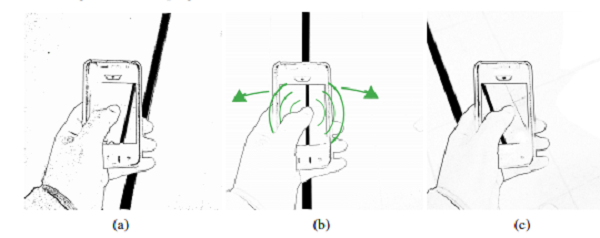Forget guide dogs! The visually impaired people of tomorrow will have apps that employ vibrations to generate virtual canes.
It’s time to look away from all the CES 2014 madness, and focus a bit on more mundane things, such as devices or apps that could make the lives of the visually impaired a bit better. Given the high number of blind people (especially in India, the country that had 15 out of 37 million blind people globally in 2007), solutions need to be developed continuously. The following smartphone app, which is said to be inspired by Greek mythology, relies on haptic feedback to provide the illusion of holding a lightweight cane in your hand.

If GPS and vocal guidance can be used to some extent outdoors to help blind people find their way, navigating indoors is an entirely different story. Pierluigi Gallo and some friends of his from University of Palermo in Italy created an app that dismisses both audio distractions and GPS navigation. However, simply installing the app on a smartphone will not suffice. Blind people would be able to use it only inside buildings that have some sort of special colored tape on the floor.
Another possible approach relies on QR codes that would need to be placed either on the floor or on the walls, so that blind people can receive information regarding the surrounding environment. The information would also be transmitted via haptic feedback, assuming that people using the app have been taught a certain code.

Arianna, which is the Italian name for Ariadne, is how Gallo and his collaborators named the smartphone app prototype, to remind people of the myth of Ariadne and Theseus. According to the developers, the name is also an acronym that stands for “pAth Recognition for Indoor Assisted NavigatioN with Augmented perception.”
Considering that Arianna makes use of the smartphone’s camera to track either the colored tape or the QR codes, users would have to be very careful not to cover the camera with a finger.
After successfully testing the app in Boston, Pierluigi Gallo and his collaborators concluded that it would be better if they used infrared triggers instead of colored band, and I couldn’t agree more. IR triggers would be easier to install, remove and relocate, as necessary.
If you liked this post, please check the other virtual cane that employs a sonar to guide the visually impaired and this elegant wristwatch that tells the time via tactile perception.










